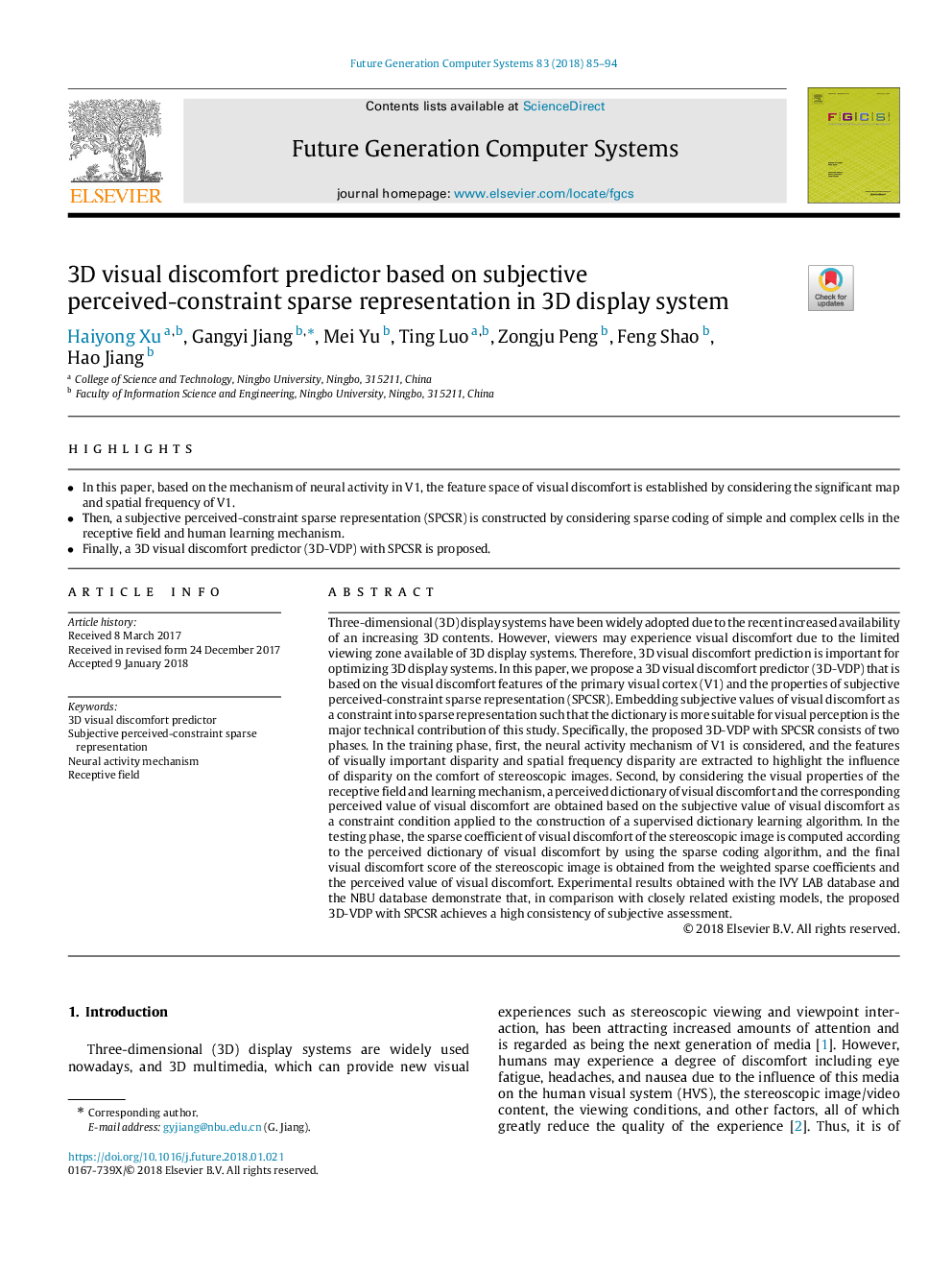| کد مقاله | کد نشریه | سال انتشار | مقاله انگلیسی | نسخه تمام متن |
|---|---|---|---|---|
| 6873132 | 1440630 | 2018 | 10 صفحه PDF | دانلود رایگان |
عنوان انگلیسی مقاله ISI
3D visual discomfort predictor based on subjective perceived-constraint sparse representation in 3D display system
دانلود مقاله + سفارش ترجمه
دانلود مقاله ISI انگلیسی
رایگان برای ایرانیان
کلمات کلیدی
موضوعات مرتبط
مهندسی و علوم پایه
مهندسی کامپیوتر
نظریه محاسباتی و ریاضیات
پیش نمایش صفحه اول مقاله

چکیده انگلیسی
Three-dimensional (3D) display systems have been widely adopted due to the recent increased availability of an increasing 3D contents. However, viewers may experience visual discomfort due to the limited viewing zone available of 3D display systems. Therefore, 3D visual discomfort prediction is important for optimizing 3D display systems. In this paper, we propose a 3D visual discomfort predictor (3D-VDP) that is based on the visual discomfort features of the primary visual cortex (V1) and the properties of subjective perceived-constraint sparse representation (SPCSR). Embedding subjective values of visual discomfort as a constraint into sparse representation such that the dictionary is more suitable for visual perception is the major technical contribution of this study. Specifically, the proposed 3D-VDP with SPCSR consists of two phases. In the training phase, first, the neural activity mechanism of V1 is considered, and the features of visually important disparity and spatial frequency disparity are extracted to highlight the influence of disparity on the comfort of stereoscopic images. Second, by considering the visual properties of the receptive field and learning mechanism, a perceived dictionary of visual discomfort and the corresponding perceived value of visual discomfort are obtained based on the subjective value of visual discomfort as a constraint condition applied to the construction of a supervised dictionary learning algorithm. In the testing phase, the sparse coefficient of visual discomfort of the stereoscopic image is computed according to the perceived dictionary of visual discomfort by using the sparse coding algorithm, and the final visual discomfort score of the stereoscopic image is obtained from the weighted sparse coefficients and the perceived value of visual discomfort. Experimental results obtained with the IVY LAB database and the NBU database demonstrate that, in comparison with closely related existing models, the proposed 3D-VDP with SPCSR achieves a high consistency of subjective assessment.
ناشر
Database: Elsevier - ScienceDirect (ساینس دایرکت)
Journal: Future Generation Computer Systems - Volume 83, June 2018, Pages 85-94
Journal: Future Generation Computer Systems - Volume 83, June 2018, Pages 85-94
نویسندگان
Haiyong Xu, Gangyi Jiang, Mei Yu, Ting Luo, Zongju Peng, Feng Shao, Hao Jiang,